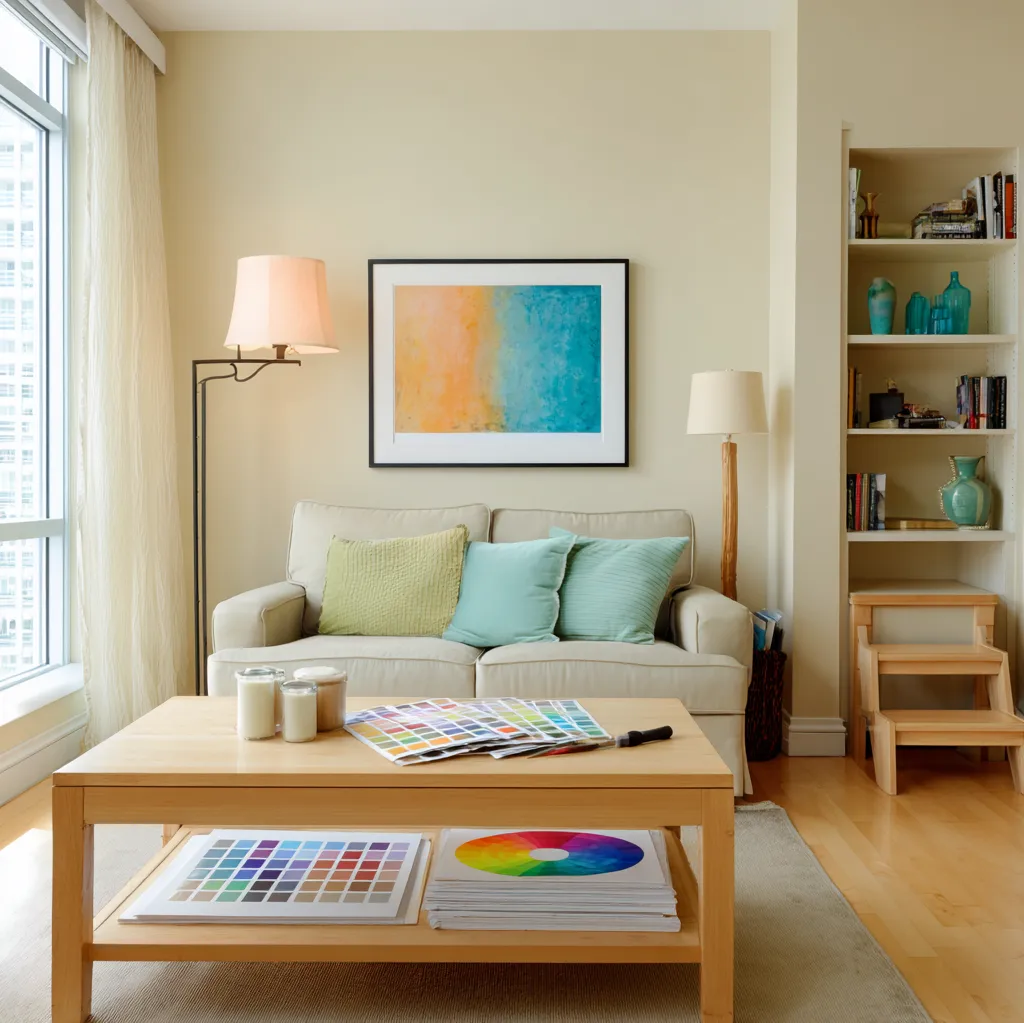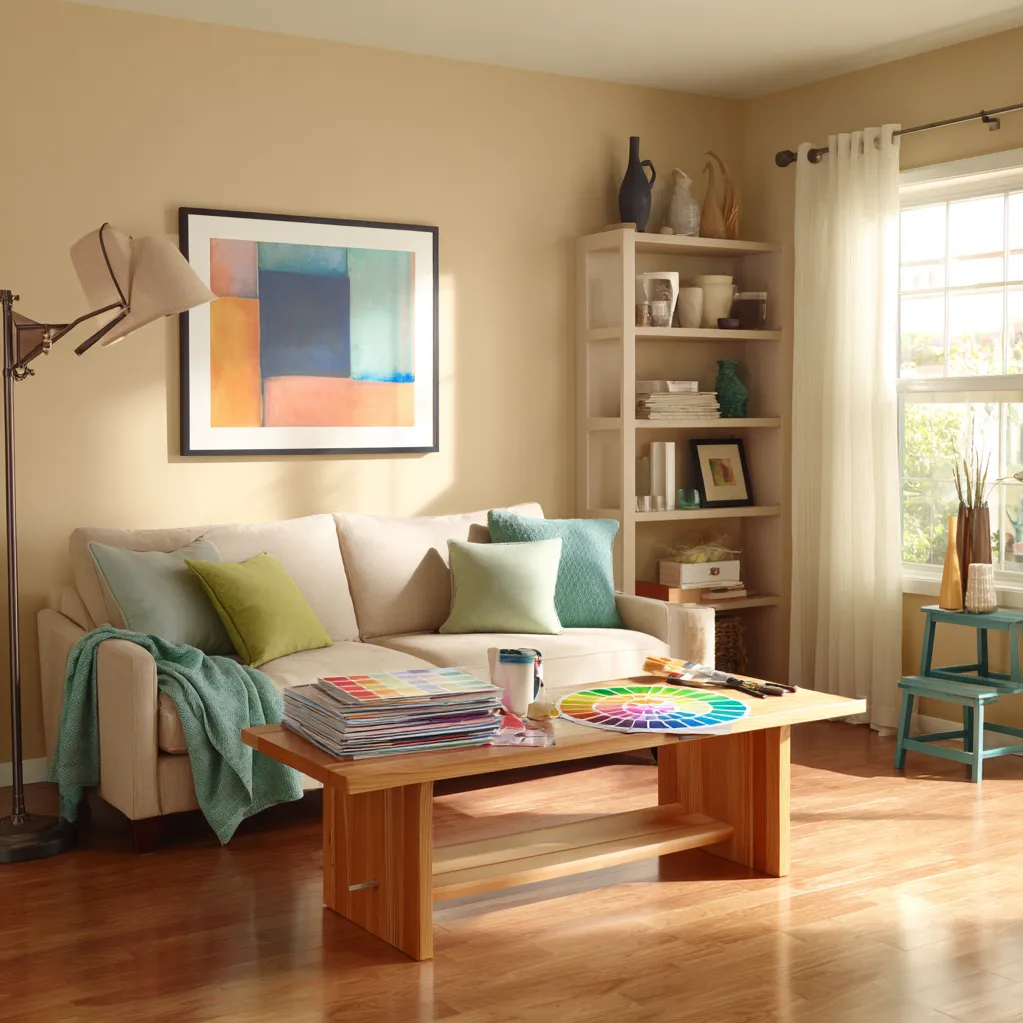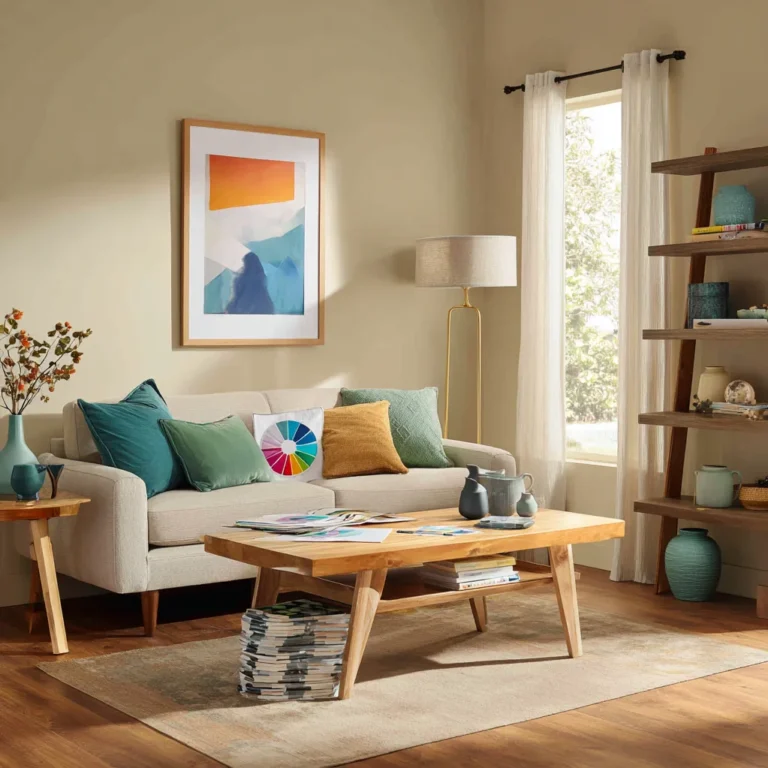
Are you tired of dull, uninspired rooms that lack personality? The color wheel is your secret weapon for transforming any space from bland to brilliant. This simple yet powerful tool has been used by artists and designers for centuries to create harmonious, eye-catching palettes that evoke emotion and style. Whether you’re decorating a cozy bedroom, a lively living room, or a functional home office, understanding the color wheel creative ideas can unlock endless possibilities. It helps you avoid common mistakes like clashing hues or overwhelming contrasts, ensuring your décor feels balanced and inviting. By mastering concepts like complementary, analogous, and triadic color schemes, you can craft spaces that reflect your unique taste while boosting mood and functionality. Many people shy away from bold colors, fearing they’ll make errors, but with the color wheel as your guide, you can experiment confidently. Think of it as a roadmap to creativity—no artistic degree required! In this article, we’ll dive into simple, actionable tips that make color theory accessible, so you can bring vibrant, cohesive designs into your home. Ready to banish the beige and embrace a world of color? Let’s explore how the color wheel creative ideas can revolutionize your approach to interior design, making every room a masterpiece of expression and comfort.

Color Wheel Creative Ideas for Harmonious Room Palettes
Creating a harmonious room palette starts with the color wheel creative ideas that emphasize balance and flow. One of the most effective approaches is the analogous color scheme, which uses colors next to each other on the wheel, like blue, blue-green, and green. This method creates a soothing, cohesive look perfect for bedrooms or living areas where relaxation is key. For instance, pairing soft blues with gentle greens can evoke a calming, nature-inspired vibe. Another powerful idea is the complementary scheme, which pairs colors opposite each other, such as red and green or blue and orange. This adds dynamic contrast that makes spaces feel lively and engaging—ideal for accent walls or decorative elements. To avoid overwhelming the room, use one color as the dominant shade and the other as an accent. For example, in a home office, a primary blue wall with orange throw pillows can boost creativity without distraction. Don't forget monochromatic schemes, which use variations of a single color for a sleek, modern effect. This is great for small spaces, as it makes rooms feel larger and more unified. Tools like online color pickers from authoritative sources, such as Adobe Color, can help you visualize these combinations before committing. By applying these color wheel creative ideas, you can transform any room into a harmonious sanctuary that reflects your personality and enhances daily life. For more inspiration on room-specific designs, check out our guide on https://wheelsofflavor.com/living-room-color-tips.

Color Wheel Creative Ideas for Accent Walls and Focal Points
Accent walls and focal points are perfect for testing color wheel creative ideas, as they allow bold choices without overpowering a space. Start by selecting a color that contrasts with your main palette to draw attention and add depth. For example, in a neutral room with beige walls, a deep purple accent wall using a complementary scheme (since purple is opposite yellow on the wheel) can create a stunning visual impact. This technique works well in living rooms or entryways, where you want to make a strong first impression. Another creative idea is to use triadic color schemes, which involve three colors evenly spaced on the wheel, like red, yellow, and blue. Apply one color to the accent wall and use the others in accessories like artwork or rugs to tie the look together. This approach adds energy and balance, making spaces feel dynamic yet coordinated. For smaller focal points, such as a fireplace or bookshelf, consider split-complementary schemes. This involves a base color and the two colors adjacent to its complement—for instance, blue with yellow-orange and red-orange. It offers contrast without the intensity of direct complements, ideal for creating subtle interest. When planning, think about lighting; natural light can enhance warm tones, while artificial light might cool them down. Always test samples on the wall to see how colors change throughout the day. By leveraging these color wheel creative ideas, you can turn ordinary walls into captivating features that elevate your entire décor. For DIY tips on painting techniques, visit https://wheelsofflavor.com/diy-painting-guide.

Color Wheel Creative Ideas for Budget-Friendly DIY Projects
You don't need a big budget to apply color wheel creative ideas; with a few DIY tricks, you can refresh your home affordably. Start with small projects like painting old furniture or creating handmade decor. For instance, use an analogous color scheme—such as yellow, yellow-orange, and orange—to repaint a dresser. This creates a warm, inviting piece that costs little but makes a big statement. Another budget-friendly idea is to focus on accessories: throw pillows, curtains, and rugs in complementary colors can instantly update a room. If your walls are neutral, add pops of color with DIY art using triadic schemes. Grab some canvases and paints in red, blue, and yellow to create abstract pieces that tie the space together. For those who love crafting, try upcycling items with color theory in mind. A monochromatic scheme using different shades of green on plant pots or vases can bring cohesion to a garden room. Online resources, like tutorials from The Spruce, offer step-by-step guides for these projects. Remember, the key is to experiment—mix and match colors based on the wheel to find what resonates with you. This not only saves money but also adds a personal touch to your home. By embracing these color wheel creative ideas, you can achieve a high-end look without the expense, making design accessible to everyone. For more DIY inspiration, explore https://wheelsofflavor.com/budget-decor-ideas.
Conclusion
In summary, the color wheel creative ideas we've explored offer a practical path to transforming your home into a vibrant, harmonious space. From harmonious room palettes that promote calm and cohesion to accent walls that inject energy and focus, these strategies empower you to make informed color choices. Budget-friendly DIY projects demonstrate that great design doesn't require a fortune—just a bit of creativity and understanding of color relationships. By applying concepts like complementary, analogous, and triadic schemes, you can avoid common pitfalls and create environments that reflect your style and enhance your well-being. Looking ahead, consider how trends might evolve; for example, sustainable colors from natural dyes could gain popularity, aligning with eco-friendly living. As you move forward, keep experimenting with the color wheel—it's a tool that grows with you, adapting to new inspirations and phases of life. Start small, perhaps with a single room or accessory, and build confidence. Remember, color is not just about aesthetics; it influences mood and functionality, making your home a true sanctuary. Embrace these ideas to craft spaces that tell your story, and don't hesitate to revisit the color wheel as your tastes change. For ongoing tips and updates, stay tuned to our blog, where we continue to share innovative ways to brighten your living experience.
Frequently Asked Questions
Q: How can I use the color wheel to choose colors for a small room?
For small rooms, the color wheel creative ideas suggest using monochromatic or analogous schemes to create a sense of space and unity. Monochromatic schemes, which involve different shades of one color, make the room feel larger and less cluttered. For example, light blues from the cool side of the wheel can open up a small bathroom. Analogous schemes, with colors next to each other like green and blue-green, add depth without overwhelming the area. Avoid high-contrast complementary schemes, as they can make the space feel busy. Test samples in natural light to ensure the colors enhance the room's size.
Q: What are common mistakes to avoid when using the color wheel for home decor?
Common mistakes include ignoring lighting effects, using too many bold colors without balance, and neglecting room function. For instance, direct complementary pairs like red and green can be too intense if used equally—instead, use one as a dominant color and the other as an accent. Also, colors look different under various lights; a color that seems perfect in store lighting might appear dull or harsh at home. Always consider the room's purpose: warm colors from the red-orange side are great for social spaces but might not suit a calm bedroom. Refer to the color wheel creative ideas to test schemes on small areas first.
Q: Can the color wheel help with combining patterns and textures?
Yes, the color wheel creative ideas extend to patterns and textures by ensuring color harmony. Start with a base color from the wheel, then choose patterns that incorporate analogous or complementary hues. For example, if your base is blue, add textured pillows with patterns in blue-green (analogous) or orange (complementary) to create visual interest without chaos. This approach ties different elements together, making the room feel cohesive. Avoid clashing by limiting the number of dominant colors—stick to 2-3 key shades from the wheel. Tools like color palettes from Adobe Color can help visualize combinations before mixing patterns in your décor.

